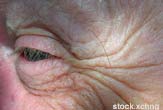Potentially Harmful 'Undead Cells' Collect with Age

As you age, so do your cells. A new study reveals that old cells make up a much larger portion of skin cells than previously thought.
Over the years, cells lose the ability to divide and they enter a state called senescence. They're not dead, but they're not quite functioning correctly either. These undead cells may delay wound healing, weaken immune responses, and help cause wrinkles.
"Senescence is not cell death, and that's really the problem with it," said John Sedivy of Brown University.
'Scary number'
Earlier studies suggested that senescent cells made up only a few tenths of a percent of living organisms. This study, performed on baboons, indicates that the amount could be as much as 20 percent in the elderly. Baboons and humans are very similar on a cellular level, so these findings likely hold true for us as well, the scientists figure.
"Twenty percent is a scary number in aged skin," Sedivy told LiveScience. "It means that 20 percent of your skin cells are nonfunctional and could be harmful."
Senescent cells have been extensively studied in tissue culture dishes, but this study, published online today by the journal Science, is the first to show that they're present in substantial amounts in living organisms.
Sign up for the Live Science daily newsletter now
Get the world’s most fascinating discoveries delivered straight to your inbox.
To count the number of senescent skin cells at different life stages, researchers took small skin samples from the forearms of baboons living on a research preserve. The primates ranged from 5 to 30 years, roughly equivalent to ages 15 to 90 in humans.
Sedivy and his team tested the sample cells for certain biomarkers that indicate cellular aging. They found that the number of senescent cells increased exponentially with age. In 5-year-olds they made up only 4 percent of the sample cells; in 30-year-olds the figure increased to 20 percent.
Hanging around
For some reason, the body doesn't actively remove these cells and they accumulate over the course of an organism's life.
"They basically hang around and don't do anything, and that in itself could be deleterious," Sedivy said. "If they're not functioning normally, and just sitting there taking up space, that could damage surrounding cells."
Other evidence, Sedivy said, suggests that they might actively secrete chemicals that harm surrounding tissue.
The body removes other types of old, broken down cells. So why not these?
Most likely it's because most advantageous traits, crafted from thousands of years of evolution, are meant for healthy, reproductive individuals. Once that stage of life has passed, the body doesn't care what happens and damaging, cancerous cells are allowed to run amok, the researchers figure.
In the case of wild baboons, these cells never get the chance to hang around so long. Once a baboon passes the reproductive age, it is usually killed by a younger, more virile animal.









